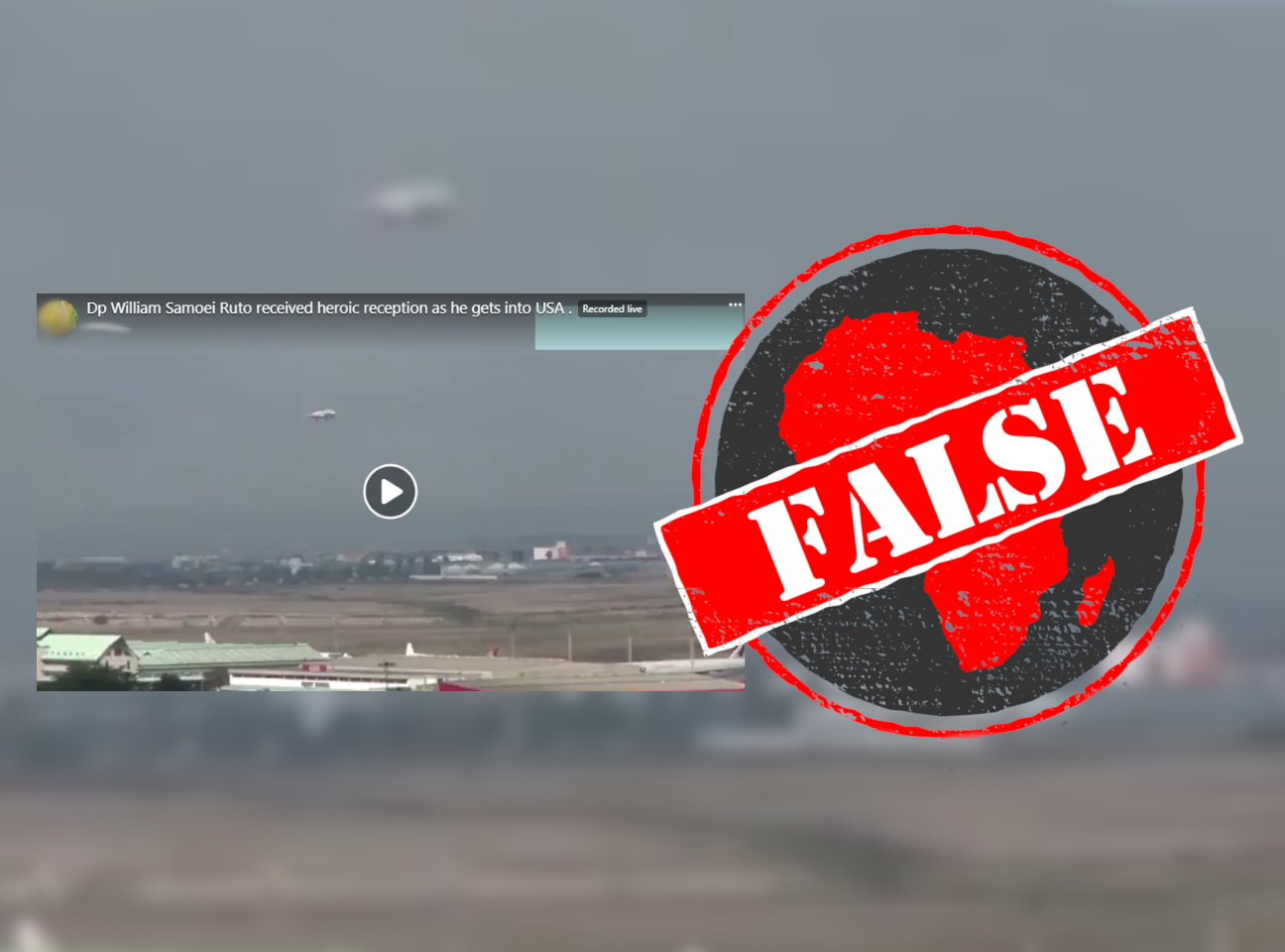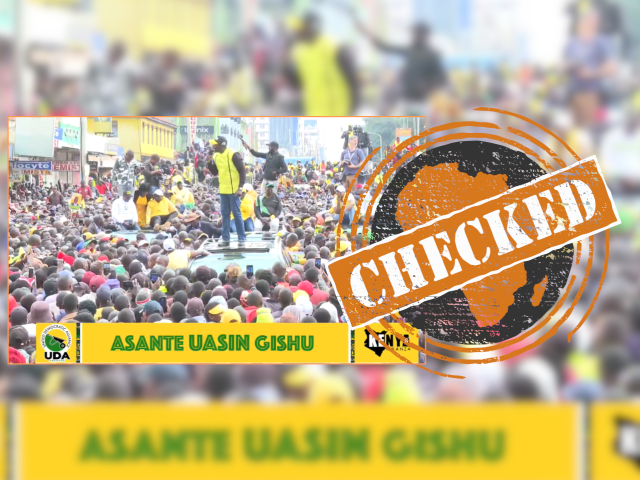On 28 February 2022, Kenyan deputy president William Ruto began a 10-day tour of the United States and United Kingdom to discuss foreign policy, democracy, governance and his economic vision for Kenya with the countries’ government officials.
Soon after, a video went viral with the claim it showed him being warmly welcomed into the US.
“Dp William Samoei Ruto received heroic reception as he gets into USA for 10 days tour,” the video’s caption reads.
The video, 5:14 minutes long, first shows a Kenya Airways plane landing at an airport. At about the 3-minute mark military music can be heard. People are seen leaving the aircraft waving the flags of Kenya and the USA. Later, Ruto greets people coming off a plane.
The video has been viewed more than 360,000 times so far, garnering some 12,000 likes and over 1,000 shares.
But does it really show Ruto’s reception in the US?

Both clips shot in Kenya – not USA
A clue that the video is not recent is that at one point Robert Godec, the former US ambassador to Kenya, appears in it. Godec served in Kenya from 2013 to 2019.
We entered the phrase “Ruto and Godec welcome Kenya airways flight” into the search field on YouTube. This returned a video uploaded on the Chams Media TV YouTube channel on 30 October 2018.
The video is titled “DP William Ruto Receives First Flight from New York”. It’s the first part of the video posted on Facebook.
The second part comes from a Kenya News Media video titled “Kenya Airways first Direct Flight from New York to Nairobi ARRIVES received by DP William Ruto!!!”. It was uploaded on 31 October 2018.
The two clips were combined to create the video circulating on Facebook.
The footage was taken in 2018. Neither clip shows Ruto getting a “heroic reception as he gets into USA for 10 days tour” in 2022.
Republish our content for free
For publishers: what to do if your post is rated false
A fact-checker has rated your Facebook or Instagram post as “false”, “altered”, “partly false” or “missing context”. This could have serious consequences. What do you do?
Click on our guide for the steps you should follow.
Publishers guideAfrica Check teams up with Facebook
Africa Check is a partner in Meta's third-party fact-checking programme to help stop the spread of false information on social media.
The content we rate as “false” will be downgraded on Facebook and Instagram. This means fewer people will see it.
You can also help identify false information on Facebook. This guide explains how.





Add new comment